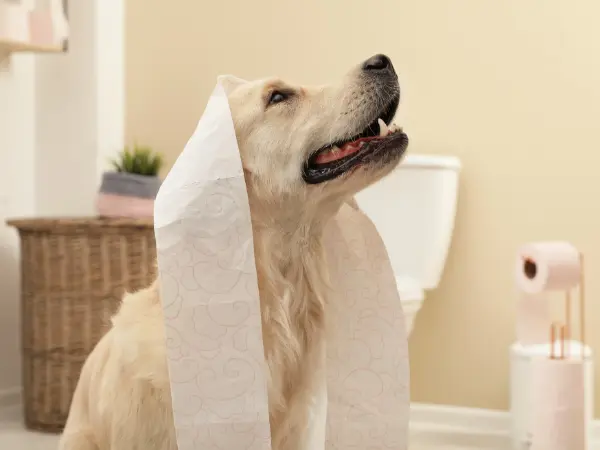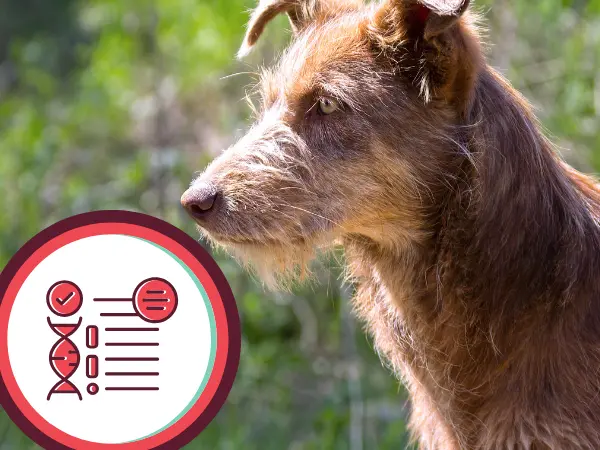Thinking of getting a dog first aid kit? Whether you are purchasing a ready-made dog first aid kit or looking to put together one for yourself, it’s important to have the right items.
In this comprehensive, vet-approved guide by Sploot Veterinary Care, we cover the basics of what should be in a dog first aid kit — as well as other common questions from pet parents.
Overview:
- Having a dog first aid kit helps pet parents be prepared for minor issues as well as dog emergencies.
- Having a dedicated dog first aid kit helps prevent the accidental misuse of items formulated for humans (some of which aren’t safe for dogs).
- Along with essential items, dog first aid kits need to have the contact information of an emergency vet.
Can You Use First Aid for Humans on Dogs?
This would depend on the specific first aid kit item. Items like bandages, gauze, tweezers, and emergency blankets for humans may be safe for dogs. However, canine-friendly versions of these items may provide more ease of use. In some cases, products designed for dogs may be more cost-effective.
Other items in a human first aid kit may not be used on dogs safely; these include medications, topical ointments, and other similar items.
Note: Certain ointments can be used for both people and dogs (e.g. NeoPolyBac or Neosporin) as long they’re used under veterinary guidance.
To avoid accidental misuse of first aid kit items for humans (and to be well-prepared for common pet injuries), it's best to have a dedicated dog first aid kit.

Ready-Made vs. DIY Dog First Aid Kit
When it comes to preparing for pet emergencies, pet parents may wonder if they should opt for a ready-made dog first aid kit or build one themselves. There are advantages to both. Ready-made dog first aid kits offer convenience, providing pre-assembled packages — while DIY dog first aid kits allow for customization to meet specific needs.
At Sploot, we highly recommend taking a close look at the contents of a dog first aid kit, whether it’s ready-made or prepared by the pet parent from scratch. This helps to ensure that the dog first aid kit has high-quality and veterinarian-recommended items.
Note: Looking for bandages, gauze, and ointment for dogs? Check out SplootRX’s wound care products for pets! SplootRX is your reliable online pet store with a variety of pet supplies and fast delivery options.
What Should Be in a Dog First Aid Kit?
A dog first aid kit should include essential items to manage common injuries or emergencies that may arise with pups. Here's a list of items to include:
1. Digital Thermometer
- Multi-use tool, NOT canine-specific
Every dog first aid kit needs a digital thermometer. It is invaluable for monitoring a dog's temperature, especially during cases of suspected heatstroke, fever, or hypothermia. Digital thermometers don’t have to be designed for dogs — however, pet parents need to keep in mind that the normal range for a dog’s body temperature is different from that of a human’s. The normal body temperature for dogs is 99.5 - 102.5°F.
Make sure to get a digital fast-read thermometer for your dog first aid kit. A rectal thermometer would be best, but pet parents can also measure a dog’s body temperature through their ‘armpits’ (the area of the dog’s body where their forelegs are connected to their torso). This area, however, is typically 2°F cooler than the rest of their body. In addition, make sure to clean the thermometer thoroughly after each use to prevent contamination.
2. Oral Syringes (No Needle)
- Multi-use tool if indicated, NOT canine-specific
Plastic oral syringes are versatile tools to include in a dog first aid kit. These can be used for administering oral medications or flushing dog wounds like puncture wounds or minor accidents.
As a reminder, oral syringes for dogs do NOT have a needle. Make sure to AVOID using a syringe with a needle for oral medications, flushing out wounds, etc. Syringes with needles should only be used as per a veterinarian’s instructions.
It is also advisable to clean the syringe promptly after each use. This can be done by drawing in warm, soapy water a few times — then, drawing in fresh water repeatedly to rinse. Another way to wash a syringe is by pulling the plunger out and washing both the barrel and the plunger. In any case, make sure that syringes are thoroughly rinsed and dried before storage.
3. Scissors with Blunt Ends
- NOT canine-specific
Scissors with blunt ends are useful for trimming hair or fur around wounds, preventing matting or contamination. Though these scissors have blunt ends to prevent accidents, we advise pet parents to use these scissors with caution.
Make sure to keep the scissors clean and sharp for precise and safe trimming.

4. Tweezers
- NOT canine-specific
Tweezers are an invaluable tool in your dog first aid kit as it helps remove splinters or burrs embedded in your dog's skin during outdoor adventures or walks in natural environments. Make sure to sanitize tweezers before and after each use to prevent infection.
Note: Though many pet parents may be using tweezers for removing ticks, this runs the risk of leaving behind the tick’s head if the tweezers are not grasping the tick’s head. An easier and more efficient tool for tick removal is the tick spoon, a small spoon with a notch to help remove ticks easily.
5. Emergency Blanket
- NOT canine-specific
An emergency blanket provides warmth and insulation in cases of hypothermia, shock, or exposure to cold temperatures. Its compact and lightweight design makes it easy to store and carry in a dog first aid kit. Make sure to store the emergency blanket in a waterproof container to keep it dry and ready for use in emergencies.
6. Cotton Balls or Swabs
- Single-use, best in small packs, NOT canine-specific
Make sure to include cotton balls and swabs in your dog first aid kit. These are commonly used to apply medication to minor cuts, scrapes, or abrasions. Make sure that cotton balls are in sealed plastic bags to maintain their cleanliness and to avoid contamination of wounds.
7. Saline Solution (Saline Eyewash)
- NOT canine-specific
Saline solution is commonly used to flush debris, dirt, or foreign objects from your dog's eyes or wounds. It would be best to use saline eyewash, which is made to be sterile.
Make sure to avoid touching the tip of the bottle to prevent further contamination. In addition, when flushing a wound, use enough saline solution to remove the dirt and debris.
Note: Saline eyewash is NOT the same as contact lens solution.
8. Gauze Pads, Gauze Bandage, & Medical Tape
- Single-use, best in small packs
Gauze pads, gauze bandages, and medical tape are essential items in a dog first aid kit. These can be used as a protective covering over cuts, scrapes, and abrasions. It is ALWAYS best to consult a veterinarian to see if bandaging is advisable for any kind of wound.
Minor cuts are typically flushed with saline solution and then covered with a thin layer of dog-friendly antibiotic ointment or spray for dogs; after which, bandaging may not be necessary.
However, for wounds that are actively bleeding, bandaging can be a helpful first-aid measure. After promptly cleaning the wound with saline solution, the wound can be dressed with the following layers, from innermost to outermost: non-adherent gauze pad, roll gauze, and bandage. Make sure that the bandage is NOT wrapped too tightly as this can lead to poor circulation to the area and swelling.
Note: Larger cuts, abrasions, burns, animal bites, wounds that are bleeding persistently, and other similar dog injuries may not be effectively treated at home. We encourage pet parents to reach out to a vet clinic that handles urgent care cases. Call us at Sploot Veterinary Care for pet urgent veterinary care.
9. Antibiotic Spray or Ointment
- BEST if formulated for dogs
Yet another essential item for any dog first aid kit is an antibiotic spray or ointment that’s formulated for dogs. This helps prevent bacterial infections in wounds, cuts, or scratches. Make sure to get an antibiotic spray or ointment that is specifically formulated for dogs (unless otherwise recommended by a veterinarian). This is because antibiotic ointment for people may not be safe for dogs, especially if the dog manages to lick the ointment from the wound.

10. Styptic Powder or Gel
- MUST be formulated for dogs
Styptic powder or gel is a lifesaver for stopping bleeding from broken nails or nails that have been cut too short. Its quick-acting formula promotes clotting and aids in wound closure. This can be a great addition to any dog first aid kit.
When using styptic power, make sure to apply the powder or gel directly to the bleeding area and apply pressure to help promote clotting. Styptic powder in a dog first aid kit needs to be specifically formulated for dogs for utmost safety.
In place of styptic powder, a pinch of corn starch can also help stop the bleeding of nails, but may not be as effective as styptic powder.
11. Hydrogen Peroxide
- MUST always be used under veterinary guidance
Hydrogen peroxide is an optional addition to a dog's first aid kit for inducing vomiting in poisoning emergencies — however, it must be used strictly under veterinary guidance. Typically, a 3% concentration of fresh, fizzy hydrogen peroxide is recommended. Always consult a vet before administering it to your dog.
Note: Should you suspect that your furry companion has ingested something harmful, swiftly reach out to dedicated resources such as the Pet Poison Helpline or the ASPCA Animal Poison Control Center for immediate telephone assistance. In instances of prolonged wait times, don't hesitate to seek guidance from an urgent care veterinarian or emergency veterinary service to ensure prompt support for your pet.
12. Benadryl (Diphenhydramine)
- MUST always be used under veterinary guidance
Benadryl (diphenhydramine) can be useful for bee stings (which can cause allergic reactions) as well as other insect bites that become inflamed and itchy. Benadryl can also be useful for managing allergies in dogs, depending on your veterinarian’s recommendation.
The usual dosage for Benadryl is around 1 mg per pound of body weight — however, it’s always best to reach out to a veterinarian before administering this medication to dogs.
Note: Dogs may get anaphylactic shock after being stung by a bee. If you notice pale gums and vomiting a few minutes after being stung, contact an urgent care veterinarian or emergency vet immediately.
13. Foldable Pet Stretcher
- MUST be designed for dogs and the appropriate size for your pup
A foldable pet stretcher is an optional dog first aid kit item that allows for safe and comfortable transportation of injured or immobilized dogs. Its portable design makes it convenient to use.
A foldable pet stretcher can be especially useful during outdoor trips — when blankets may not be available to create a make-shift pet stretcher. Make sure to practice using the stretcher before an emergency to ensure you can assemble it quickly and correctly.
Note: In the absence of a pet stretcher, other items such as towels, blankets, or dog beds can be used as a stretcher.
14. Foldable Pet Carrier
- MUST be designed for dogs; may be a better option for small dogs
A foldable pet carrier is another optional item that dog parents can include in a dog first aid kit or emergency preparedness kit. Dog carriers provide a comfortable and secure way to transport dogs during emergencies.
When getting a pet carrier for dogs, make sure to get a sturdy, appropriately sized carrier that allows the dog to stand and turn around inside the carrier. In addition, always ensure that your pup has a positive association with their carrier; this helps reduce stress during emergencies.
Note: Pet carriers can serve the same purpose as a dog stretcher for small dogs, allowing for easier transport. For larger dogs, however, a pet stretcher may be easier to use during medical emergencies.
15. Comfortable Soft Muzzle
- MUST be designed for dogs and the appropriate size for your pup
A soft, comfortable muzzle is a must-have in a dog first aid kit. This helps prevent biting during stressful situations such as transportation to the veterinarian or medical treatment.
Make sure to introduce your dog to the muzzle gradually and associate it with positive experiences (i.e. positive reinforcement) to reduce stress.
Note: Even the most well-behaved and sweetest dogs may bite when experiencing pain. This is why a comfortable soft muzzle can be a useful tool for any dog first aid kit.

16. Basic Dog First Aid Manual
- MUST be canine-specific
A dog first aid manual is an essential resource for pet owners, providing invaluable instructions for handling common emergencies and injuries. This can be a useful addition to any dog first aid kit.
A dog first aid manual from a reputable source is helpful in some scenarios — but should not take the place of urgent veterinary care. Make sure to call an urgent care veterinarian during urgent cases or pet emergencies.
17. Emergency Contact Information
Emergency contact information is yet another useful addition to your dog first aid kit. Here are a few examples of contacts to include:
- Your urgent care veterinarian or go-to emergency vet
- Learn more - choosing an emergency vet
- Pet Poison Helpline OR ASPCA Animal Poison Control
- Pet transportation or pet ambulance in your local area
Along with the above information, pet parents can also include a spare pet ID tag on a spare collar (along with a spare leash), in case something happens to the original collar and leash.
Note: For pet parents in Denver and Chicago, Sploot Veterinary Care is here to provide urgent veterinary care, 365 days a year. If you are facing a pet emergency, call us at (720)-740-8129
Final Thoughts on Preparing a Dog First Aid Kit
This wraps up our guide on preparing a dog first aid kit. For further information and guidance on choosing items to include in your dog’s first aid kit, consult your primary care veterinarian.
As a reminder, please bear in mind that certain items in a dog first aid kit need to be canine-specific for utmost safety — these items include ointments, medications, and other formulations that go on the dog’s skin.
To further ensure the health and well-being of your canine companion, we recommend staying on top of dog routine care, as well as preventive veterinary care measures like regular wellness exams, dog vaccination updates, and heartworm prevention.
Note: Looking to restock pet supplies, preventives, first aid kit items, and more? Check out SplootRX, your reliable online pet store with various vet-preferred pet supplies and fast delivery options.
Sploot Vets: A Trusted Provider of All-in-One Care
If you have further questions about your dog’s health and well-being, Sploot Veterinary Care is here for you. We have vet clinics in Chicago, Denver, & Colorado Springs, offering all-in-one vet care—with primary care, urgent care, and emergency vet services, all under one roof.
In case of emergencies, feel free to reach out to our veterinary tele-triage for further guidance. As always, we’re with you every pounce of the way!






